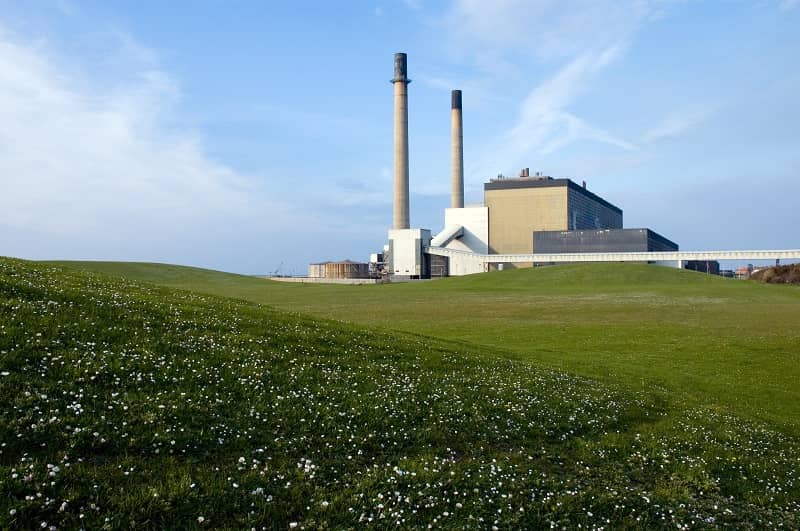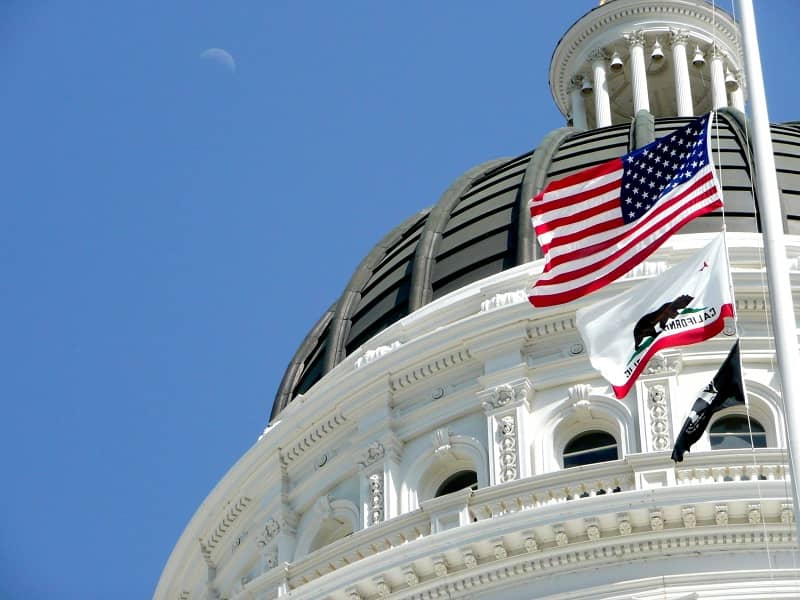

Summary
Existing voluntary green power programs can increase renewable energy generation without forcing unnecessary costs on the entire population. Just as with organic food, customers who value green power can purchase it. Unfortunately, Senate Bill 838 mandates utilities to provide renewable power that 98% of Oregonians currently choose not to purchase.
Word count: 779
Imagine going to the grocery store one day and noticing that food prices are up to 30% higher due to a recently passed government mandate. This mandate forces grocery stores to stock their shelves with a certain percentage of organically grown food, and customers are required to purchase at least 25% organic products each time they shop. No, this isn’t happening in Oregon…at least not anytime soon. Currently, shoppers have the choice to purchase organic or non-organic products, and grocery stores have the choice to provide customers with either or both.
The Oregon Renewable Energy Act (Senate Bill 838, signed into law in June 2007) has taken the opposite route and mandated that electric utilities must offer a “product” that consumers have shown they do not want. Renewable power is the “organic” version of electricity generation for the electric utility industry; and Senate Bill 838 imposes a mandate, called the Renewable Portfolio Standard (RPS), on most electric utilities. Large utilities (those with 3% or more of the state’s load) are required to use more renewable energy in their electricity generation: 5% by 2011 until 2014; 15% for 2015-2019; 20% for 2020-2024; and 25% by 2025.
Although several utilities already offered this program for many years, SB 838 helped to establish a green power program that accurately reflects the above market cost of renewable energy generation and allows customers to voluntarily opt into buying 100% renewable energy at this price premium. Ironically, these voluntary renewable energy purchases cannot be included in meeting the renewable portfolio standard. This program does however provide a litmus test for whether the market and Oregonians are ready and willing to have more renewable power sources as part of the state’s electricity generation mix. More than 98% of Oregonians have said NO.
Currently wind, solar and geothermal energy cost more per kilowatt-hour (KwH) than fossil fuel power plants or hydroelectric power. The green power program premium pays for meeting the above-market cost of renewable generation, similar to organic food premiums. The Organic Trade Association estimates that total organic food and beverage sales were $13.8 billion in 2006, and it is estimated that sales of organic foods will increase by 71 percent from 2006 through 2011. Clearly, organic food has become mainstream without restrictive mandates and has done fantastically in the free market, even at a price premium. Consumers value the product and are willing to pay for it.
Renewable energy advocates promote renewable generation to reduce the threat of global warming by offsetting fossil fuel generation and the greenhouse gas emissions associated with it. Like organic food, green power program participators value the product and thus are willing to pay a premium for it.
According to a recent poll, 76% of Oregonians agree that “global warming is so urgent a problem that even in these difficult economic times, we should take action now.” However, actions speak louder than words. Participation rates in the voluntary green power program show just how many Oregon households really value renewable energy sources. The statewide average participation rate is a dismal 1.29%. The latest available figures show that PGE boasts the highest participation rate in the state, and one of the highest in the nation, with a residential participation rate of only 6.34%, meaning only about 6 out of 100 households value renewable power enough to pay the above-market premium. The program does show some promise, however, and a few utilities have seen increasing participation rates since the beginning of the program.
| Green Power Participation Rates For Residential Customers of Oregon Utilities | |||||
| Utility | 2006 | 2005 | 2004 | 2003 | 2002 |
| Portland General Electric | 6.34% | 5.80% | 4.86% | 3.36% | 2% |
| Central Electric | 4.50% | 5.10% | 4.10% | 3.15% | 3.80% |
| PacifiCorp | 4.48% | 3.66% | 2.96% | 2.85% | 1.10% |
| Emerald PDU | 3.62% | 3.27% | 2.77% | 0.17% | N/A |
| EWEB | 2.54% | 2.22% | 2.41% | 2.97% | 3.20% |
| Consumers Power Inc | 2.18% | 2.19% | 1.41% | 2.78% | 3.10% |
| Douglass Electric | 1.09% | 1.54% | 1.19% | 1.39% | 1.60% |
| Midstate Electric | 1.40% | 1.46% | N/A | 1.24% | 1.10% |
| Oregon Trail Electric | 1.10% | 1.16% | 1.18% | 0.92% | N/A |
| Clearwater Power | 0.32% | 0.50% | 0.56% | 0.55% | 0.60% |
| City of Ashland | 0.42% | 0.25% | 0.11% | N/A | N/A |
| Umatilla Electric | 0.03% | 0.07% | 0.05% | 0% | 0.30% |
| Source: Renewable Northwest Project, 2007 | |||||
A voluntary green power program is the free-market way to finance and possibly to increase renewable energy generation without forcing unnecessary costs on the rest of the population. Just as with organic food, customers who value the “product” can purchase it at a premium; those who don’t value it shouldn’t be forced to pay for a minority’s ideology or preferences. Unfortunately, although this voluntary program exists, SB 838 mandates utilities to provide renewable power generation, even if their customers are not demanding it. These mandates create a market distortion in which more renewable power is provided by utilities than is demanded by customers. All ratepayers are forced to pay the cost through increased transmission and integration costs and adjustments for renewable power on monthly bills.
Senate Bill 838 is yet another example of government forcing the market to produce and consume a product that is neither valued nor demanded by Oregonians. Renewable Portfolio Standards should be abolished; and the renewable power market niche should thrive, or not, on its own through voluntary consumer purchases. The free market has worked for organic food; it will work for renewable energy as well.
Attention editors and producers:
Cascade Commentaries are provided for reprint in newspapers and other publications, with credit given to author(s) and Cascade. Contact Cascade to arrange print or broadcast interviews on this commentary topic.
Electronic text files are available online at www.cascadepolicy.org.
Please contact:
Nancy Wheaton
Cascade Policy Institute
4850 SW Scholls Ferry Rd.
Suite 103
Portland, Oregon 97225
Phone: (503) 242-0900
Fax: (503) 242-3822
www.cascadepolicy.org
info@cascadepolicy.org
Cascade Policy Institute is a tax-exempt educational organization as defined under IRS code 501(c)(3). Nothing appearing in this Cascade Commentary is to be construed as necessarily representing the views of Cascade or its donors, or as an attempt to aid or hinder the passage of any bill before any legislative body. The views expressed herein are the author’s own.











